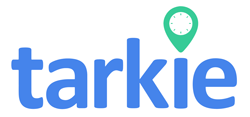Are traditional paper-based forms slowing down your business’s data collection process? Are you looking for a more efficient and accurate way to collect data in the field? Look no further. Customizable digital forms are revolutionizing the way businesses streamline data collection, making it faster, more accurate, and hassle-free.
Whether you’re conducting surveys, performing inspections, or gathering customer information, customizable digital forms offer a practical alternative to traditional paper forms. With customizable features, these digital document templates allow you to maintain the look and feel of your existing forms while gaining the convenience and accuracy of digital data collection.
In this article, we’ll explore the various ways in which customizable digital forms are transforming data collection in the field and improving overall efficiency. From enhancing accuracy with auto-calculations and dropdown lists to incorporating media capabilities and enabling real-time data submission, digital forms offer a range of advantages that can streamline your business operations.
So, are you ready to discover the power of customizable digital forms? Let’s dive in!

Key Takeaways:
- Customizable digital forms streamline data collection in the field.
- They offer a practical alternative to traditional paper-based forms.
- Digital forms enhance accuracy and offer convenience and efficiency.
- Features like auto-calculations, media capabilities, and real-time data submission improve the overall data collection process.
- Customizable digital forms empower businesses to optimize their operations and make data-driven decisions.
The Rise of Digital Forms in Modern Data Collection
Digital forms have become increasingly popular in recent years as businesses recognize the advantages they offer over traditional paper-based forms. The rise of digital forms in modern data collection can be attributed to several factors that make them a preferred choice for businesses.
One of the key benefits of digital forms is their enhanced accuracy. Unlike paper forms, digital forms minimize the risk of human error and ensure that data is entered correctly. This accuracy is crucial for businesses that rely on accurate and reliable data for decision-making and analysis.
Moreover, digital forms enable faster data collection. With paper forms, data entry can be time-consuming and tedious, leading to delays and inefficiencies. Digital forms streamline the data collection process, allowing for quicker and more efficient data entry, saving businesses time and resources.
Another advantage of digital forms is the ability to streamline workflows. Manual processes associated with paper forms, such as printing, distributing, and organizing, can be time-consuming and prone to errors. Digital forms automate these processes, making data collection and management more streamlined and efficient.
In today’s digital age, businesses recognize the value and convenience of using digital forms for data collection. The rise of digital forms in modern data collection is a testament to their effectiveness in improving accuracy, speeding up data collection, and streamlining workflows. By embracing digital forms, businesses can optimize their data collection processes and stay ahead in the evolving digital landscape.
Transforming Field Operations with Digital Document Forms
Digital document forms are revolutionizing field operations by providing enhanced accuracy and maintaining consistency in data collection processes. Businesses can leverage the power of digital document forms to streamline their field operations and improve overall efficiency. These forms offer customizable features that allow companies to maintain the look and feel of their existing forms while benefiting from the convenience and accuracy of digital data collection.
Enhanced Accuracy with Auto-Calculations and Dropdown Lists
One of the key advantages of digital document forms is the ability to incorporate auto-calculations and dropdown lists. By automating calculations, businesses can eliminate manual errors and ensure accurate data entry. Field workers no longer need to spend time manually crunching numbers; the forms automatically perform the calculations, reducing the risk of errors and improving efficiency. Dropdown lists also provide a standardized selection of options, eliminating the possibility of inconsistent or incorrect data input. The utilization of these features enhances accuracy and ensures reliable data collection in the field.
Maintaining Consistency Through Standardized Digital Processes
With digital document forms, businesses can standardize their data collection processes across all field operations. By creating standardized digital templates, companies can ensure that all field workers collect data in a consistent manner. This consistency leads to reliable and comparable information, enabling more accurate analysis and decision-making. Standardized digital processes also allow for easier data aggregation, reducing the time and effort required to compile and analyze data from multiple sources. By maintaining consistency through standardized digital processes, businesses can optimize their field operations and improve overall productivity.

Integrating Media Capabilities with Digital Forms
Digital forms have evolved beyond simple text-based data collection. They now offer media capabilities that enable field workers to capture photos and videos, adding visual evidence and context to their data submissions. This integration of media into digital forms enhances the data collection process and improves data analysis.
By incorporating media capabilities into digital forms, businesses gain several advantages. First, visual evidence provides a more comprehensive understanding of the collected data, allowing for better analysis and decision-making. Second, media allows for contextual information to be captured alongside the data, providing a deeper level of insight. Finally, incorporating media capabilities into digital forms enhances the overall user experience, making the data collection process more engaging and intuitive.
“Integrating media capabilities into digital forms has transformed the way we collect and analyze data. The ability to capture photos and videos allows us to present a complete picture of our field operations and supports more informed decision-making.”
With media capabilities, businesses in various industries can revolutionize their data collection processes. For example, in construction, field workers can capture images of job sites to monitor progress and identify potential issues. In healthcare, medical professionals can record patient symptoms through videos, providing a more accurate representation of their condition. In environmental studies, researchers can document ecological changes with photographs, contributing to more comprehensive data analysis.
The integration of media into digital forms is a valuable feature that supports richer data collection experiences and improved data analysis. By embracing the possibilities of media capabilities, businesses can enhance their data collection processes, leading to better-informed decisions and more impactful insights.
Digital Forms: A Tool for Real-Time Data Submission and Management
Digital forms play a crucial role in enabling businesses to seamlessly collect and manage data in real-time. With the advent of customizable digital forms, organizations can instantly access and analyze data as soon as it is submitted. Real-time data submission empowers businesses to make informed decisions promptly and address any emerging issues in a timely manner.
Instant Data Sync and Automatic Form Routing
To ensure efficient data management, instant data sync and automatic form routing are essential features of digital forms. When data is submitted through a digital form, it is automatically synced to the appropriate database or system. This eliminates the need for manual data entry or manual transfer of information, saving time and reducing the risk of errors. Automatic form routing directs the submitted data to the relevant stakeholders or departments, ensuring prompt action and collaboration.
Enabling Immediate Actions with Real-Time Submissions
Real-time data submission through digital forms enables businesses to take immediate actions based on the collected information. Whether it’s addressing customer inquiries, resolving issues, or making data-driven decisions, the timeliness of real-time submissions significantly enhances operational efficiency. By leveraging the power of digital forms for real-time data submission, businesses can proactively respond to customer needs, optimize processes, and drive continuous improvement.

| Benefits of Real-Time Data Submission and Management |
|---|
| 1. Improved Decision-Making: Real-time data submission enables businesses to access up-to-date information, leading to more accurate and informed decision-making. |
| 2. Enhanced Collaboration: Instant data sync and automatic form routing facilitate seamless collaboration among team members, departments, or even external partners. |
| 3. Timely Issue Resolution: With real-time submissions, businesses can identify and address issues promptly, minimizing potential impacts on operations or customer satisfaction. |
| 4. Streamlined Workflows: Manual data entry and transfer processes are replaced by automated data sync and routing, streamlining workflows and reducing administrative burden. |
The ability to submit and manage data in real-time has become an invaluable asset for businesses seeking to stay agile, competitive, and customer-focused. By embracing digital forms and harnessing their real-time data submission capabilities, organizations can unlock new possibilities for efficient data management and informed decision-making.
Optimizing Offline Capabilities for Remote Data Collection
One of the major challenges faced during fieldwork is the lack of connectivity, particularly in remote areas where internet access may be limited or unavailable. However, digital forms offer a solution to overcome these connectivity challenges and optimize offline capabilities for remote data collection.
With digital forms, field workers can collect data even without an internet connection. This offline capability allows them to continue their data collection activities without interruption, ensuring that valuable information is not lost or delayed due to connectivity issues.
When connectivity is restored, the collected data can be seamlessly synced with the central database or cloud storage. This post connectivity sync ensures the validity and accuracy of the data by validating and cross-checking the collected information against existing records, eliminating any potential errors or discrepancies.
By optimizing offline capabilities, digital forms enable businesses to efficiently gather data from remote locations where connectivity is a challenge, ensuring that valuable data is not lost and maintaining the integrity of the collected information.
Solution for Connectivity Challenges in Field Work
Connectivity challenges in field work can hinder the collection and transfer of data, causing delays, errors, and inefficiencies. However, digital forms provide a practical solution to overcome these challenges and ensure that field workers can perform their tasks seamlessly.
By utilizing offline capabilities, field workers can access and interact with digital forms even in areas with limited or no internet connectivity. This empowers them to continue their data collection activities without interruption, capturing information as it becomes available and avoiding delays caused by connectivity issues.
Furthermore, digital forms allow field workers to store data locally on their devices until a stable internet connection is available. This eliminates the need for manual record-keeping or reliance on paper-based forms, reducing the risk of data loss and ensuring data integrity.
Once connectivity is restored, the offline data can be automatically synced with the central database or cloud storage, ensuring that the collected information is accurately and securely transmitted for further analysis and decision-making.
Ensuring Data Validity Through Post Connectivity Sync
Validating the accuracy and integrity of data collected in remote areas can be a challenge due to connectivity limitations. However, digital forms address this issue by implementing a post connectivity sync process.
After field workers regain internet connectivity, the collected data is automatically synced with the central database, where it undergoes a validation process. This involves cross-referencing the collected data with existing records, checking for errors or inconsistencies, and ensuring the validity and accuracy of the data.
The post connectivity sync process helps maintain data integrity by identifying and rectifying any discrepancies or errors that may have occurred during offline data collection. This ensures that the final dataset is reliable and can be confidently used for analysis, reporting, and decision-making.
By optimizing offline capabilities for remote data collection and implementing post connectivity sync, digital forms offer a robust solution for businesses operating in areas with connectivity challenges, enabling seamless and reliable data collection that informs critical business processes.
Benefits of Optimizing Offline Capabilities for Remote Data Collection
| Benefits | Description |
|---|---|
| Continuity of data collection | Field workers can collect data even without an internet connection, ensuring uninterrupted data gathering activities. |
| Data integrity | The post connectivity sync process validates and cross-checks collected data, ensuring its accuracy and reliability. |
| Reduced dependency on connectivity | Offline capabilities reduce reliance on stable internet connections, allowing field workers to operate in areas with limited or no connectivity. |
| Improved efficiency | Optimizing offline capabilities eliminates delays caused by connectivity issues, enabling timely data collection and analysis. |
Maximizing Efficiency with Mobile Responsive Forms
Mobile responsiveness is crucial in today’s digital landscape. In order to maximize efficiency, it is essential to utilize mobile responsive forms that are compatible with smartphones and tablets. By enabling field workers to collect and submit data directly from their mobile devices, businesses can streamline their data collection processes and eliminate the need for manual data entry or cumbersome paper forms.
Mobile responsive forms ensure a seamless user experience, allowing field workers to easily navigate and interact with the form on their mobile devices. This eliminates the need for complex resizing or scrolling, optimizing efficiency and productivity in the field.
With mobile responsive forms, field workers can conveniently input data while on the go, without the limitations of being tied to a desktop computer or relying on unstable internet connections. This flexibility and accessibility empower field workers to collect and submit data in real-time, enhancing the speed and accuracy of data collection.
Furthermore, mobile responsive forms can leverage the functionalities available on mobile devices, such as built-in cameras and GPS capabilities. Field workers can capture photos, videos, and geo-tagged information directly within the form, providing valuable context and supporting evidence for the collected data.
Implementing mobile responsive forms not only improves efficiency in data collection but also enhances the overall workflow and productivity of field workers. By embracing the mobile revolution, businesses can leverage the power of mobile technology to streamline their operations, optimize resource allocation, and make data-driven decisions.

Incorporating Electronic Data Capture for Advanced Field Reporting
Utilizing Photo and Video Evidence in Reports
One of the key advantages of electronic data capture through digital forms is the ability to incorporate photo and video evidence in field reports. Field workers can capture visual documentation of their findings, providing essential context and credibility to their reports. By including photos and videos directly within the digital form, businesses can ensure that the information presented is accurate, reliable, and visually engaging.
This feature is particularly beneficial in industries such as construction, insurance, and environmental surveys, where visual evidence plays a crucial role in validating data and supporting claims. Instead of relying solely on written descriptions, field workers can provide photo and video evidence to reinforce their observations and enhance the overall accuracy of their reports.
For example, in construction inspections, field workers can capture images of infrastructural issues, such as cracks in walls or hazardous wiring, and include them directly in the digital form. These visual records not only document the current state of the site but also serve as valuable references for future assessments or renovations.
Similarly, in insurance claims, photos and videos can be used as indisputable evidence of property damage or accidents. By geotagging these visual records, insurers can verify the location and condition of the insured property, ensuring a fair and transparent claims process.
Geo-Tagging and Time-Stamping for Data Veracity
In addition to photo and video evidence, electronic data capture allows for the incorporation of geo-tagging and time-stamping, further enhancing the veracity and reliability of field reports. Geo-tagging involves embedding location data (such as latitude and longitude coordinates) into the collected data, providing valuable context about where the information was captured.
Geo-tagging ensures that the accuracy of the reported data can be confirmed and prevents any ambiguity or confusion regarding the location referenced in the report. This feature is particularly useful in industries such as agriculture, environmental sciences, and logistics, where location-specific data is critical for decision-making and analysis.
Time-stamping, on the other hand, provides an additional layer of data credibility by recording the exact date and time when the information was collected. This ensures that the data is up-to-date, reliable, and compliant with any regulatory or compliance requirements.
By incorporating geo-tagging and time-stamping into digital forms, businesses can establish a comprehensive and robust audit trail for their field reporting activities. This not only enables accurate data analysis but also facilitates accountability and transparency throughout the data collection and reporting process.
Introducing Cloud-Based Forms for Streamlined Workflow
Cloud-based forms are revolutionizing data collection and workflow management for businesses. These forms offer a host of advantages that contribute to a streamlined and efficient workflow. With the ability to access data from anywhere, collaborate seamlessly, and ensure automatic data backup, cloud-based forms empower businesses to optimize their data collection processes.
“I don’t need a hard disk in my computer if I can get to the server faster… carrying around these non-connected computers is byzantine by comparison.” – Steve Jobs
One of the key benefits of cloud-based forms is the seamless collaboration they enable. Team members can easily access and share forms, making it effortless to work together on data collection and analysis. This collaborative approach enhances communication and ensures that all stakeholders have real-time access to the most up-to-date information.
Another advantage of cloud-based forms is their accessibility. With these forms stored in the cloud, data can be accessed anytime, anywhere, as long as there is an internet connection. This level of accessibility allows field workers to collect and submit data on the go, without the limitations of being tied to a physical location.
Cloud-based forms also offer automatic data backup, eliminating the risk of data loss. The data entered into these forms is securely stored in the cloud, ensuring that it can be easily retrieved and restored in the event of any unforeseen circumstances or technical issues.
By leveraging cloud-based forms, businesses can optimize their data collection processes and improve overall workflow efficiency. These forms provide a streamlined and convenient solution that enhances collaboration, accessibility, and data security.

| Advantages of Cloud-Based Forms for Streamlined Workflow |
|---|
| Seamless collaboration |
| Access data from anywhere |
| Automatic data backup |
Improving Data Collection With QR Codes and NFC Technology
In today’s digital era, businesses are constantly seeking innovative ways to improve data collection processes. One such technology that has gained significant popularity is the implementation of QR codes and NFC (Near Field Communication) technology. These two powerful tools are revolutionizing data collection, making it more efficient and streamlined.
Asset Management Made Easier
A crucial aspect of data collection is the accurate tracking and management of assets, such as equipment and tools. QR codes and NFC tags provide a practical solution for simplifying asset management processes. By incorporating these technologies into digital forms, businesses can easily track and identify assets in real time.
With QR codes, assets can be labeled with unique codes that can be scanned using a smartphone or tablet. This enables field workers to quickly access asset information, update statuses, and perform maintenance tasks, all while on the go.
NFC technology takes asset management a step further by allowing for contactless identification. By simply tapping an NFC-enabled device on an asset’s NFC tag, field workers can retrieve information, update records, and seamlessly manage assets without the need for manual data entry.
Streamlining Check-In Processes for Tools and Equipment
Efficient check-in processes for tools and equipment are essential for maximizing productivity and minimizing downtime. QR codes and NFC technology offer a streamlined solution for managing check-ins, ensuring that the right tools are in the right place at the right time.
With QR codes, each tool or piece of equipment can be assigned a unique code that can be scanned during check-in processes. This enables quick identification and documentation of equipment, reducing administrative tasks and eliminating manual errors.
NFC technology provides an even more seamless check-in experience. By placing NFC tags near check-in stations, field workers can simply tap their NFC-enabled devices on the tags to initiate the check-in process. This simplifies the process and reduces the time spent on administrative tasks.
Overall, the incorporation of QR codes and NFC technology into data collection processes significantly enhances efficiency, accuracy, and productivity. By streamlining asset management and check-in processes, businesses can optimize their operations and make better-informed decisions based on real-time information. Embracing these technologies empowers businesses to stay ahead in an increasingly digital world.
Automating Digital Form Management for Greater Productivity
Efficient digital form management is crucial for businesses to streamline their data collection processes and improve overall productivity. By automating digital form management tasks, businesses can eliminate manual processes, reduce errors, and free up valuable time for employees to focus on more critical tasks. Automation brings numerous benefits and potential for greater productivity. Here are some key advantages:
- Streamlined Approval Processes: With automated workflows, digital forms can be seamlessly routed to the appropriate stakeholders for approval. This eliminates the need for manual handling and expedites the approval process, enabling faster decision-making.
- Automatic Report Generation: Automating digital form management allows for the automatic generation of reports. This saves time and effort in manually compiling data and creating reports, ensuring that critical information is readily available for analysis and decision-making.
- Elimination of Manual Tasks: Automation reduces the burden of repetitive manual tasks associated with managing digital forms. Tasks such as data entry, data validation, and form distribution can be automated, minimizing errors and accelerating the overall data collection process.
“Thanks to Tarkie, now we get our nationwide sales and inventory reports in real-time! As our store check automation platform, Tarkie gave us visibility on the performance of our 750 stores.” – Joonnie Centeno, Uratex Trade Services Manager
By embracing automation in digital form management, businesses can unlock greater productivity and efficiency. This not only enhances the data collection process but also empowers employees to contribute more strategically to the company’s goals.
To visualize the benefits of automating digital form management, take a look at the table below:
| Manual Form Management | Automated Form Management |
|---|---|
| Time-consuming manual data entry | Automated data entry, reducing errors and saving time |
| Delays in form approval process | Streamlined workflows with automated routing for faster approvals |
| Manual report generation | Automatic report generation for immediate analysis |
| Inefficient distribution of forms | Automated form distribution to relevant stakeholders |
| Higher risk of data inaccuracies | Data validation and error checks for improved accuracy |
As shown in the table, automating digital form management reduces manual efforts, accelerates processes, and minimizes the risk of errors. This not only translates into greater productivity but also enhances the overall quality and reliability of the collected data.
Exploring the Impact of Web-Based Forms on Industry Operations
Web-based forms have revolutionized data collection and reporting in industry operations. By leveraging the power of the internet, businesses can streamline their processes and improve overall efficiency. Let’s delve into how web-based forms are transforming industry operations and enabling businesses to meet regulatory compliance requirements while generating customized reports tailored to diverse domains.
Meeting Regulatory Compliance with Structured Digital Data
Regulatory compliance is a crucial aspect of industry operations. With web-based forms, businesses can ensure compliance by collecting structured digital data that adheres to regulations and guidelines. These forms incorporate mandatory fields and validation checks, reducing the risk of errors and non-compliance. By capturing accurate and standardized data, businesses can confidently navigate the regulatory landscape and minimize the chance of penalties or legal complications.
Customized Reporting Across Diverse Domains
Web-based forms offer the flexibility to generate customized reports that cater to specific industry domains. By tailoring reporting templates and formats, businesses can easily extract relevant insights and present data in a meaningful way. Whether it’s financial reports, operational metrics, or performance analytics, web-based forms allow for customized reporting that aligns with industry-specific requirements and facilitates informed decision-making.
Furthermore, these forms enable businesses to create dynamic reports that can be updated in real-time, providing stakeholders with up-to-date information for accurate analysis. With customizable reporting options, businesses can unlock valuable insights, identify trends, and make data-driven decisions that drive growth and improvement.
In summary, web-based forms have a profound impact on industry operations. They empower businesses to meet regulatory compliance requirements through structured digital data while providing customized reporting across diverse domains. By embracing web-based forms, businesses can optimize their data collection and reporting processes, contributing to increased efficiency and enhanced decision-making capabilities.
Conclusion
In conclusion, the digital transformation has revolutionized field data collection processes, paving the way for a more efficient and future-ready approach. By embracing customizable digital forms, businesses can streamline their operations, improve efficiency, and make data-driven decisions. These versatile and convenient forms empower organizations to optimize their data collection processes and stay ahead in the digital era.
With the ability to maintain the look and feel of existing paper-based forms, digital forms offer a seamless transition to the digital landscape. Businesses can leverage the advantages of customizable digital forms to not only streamline data collection but also enhance accuracy, maintain consistency, and integrate media capabilities for visual evidence and context.
Furthermore, the real-time data submission and management enabled by digital forms provide businesses with immediate access to valuable insights. This facilitates prompt decision-making and timely action, ensuring that opportunities are seized and challenges are addressed proactively.
By equipping businesses with offline capabilities, mobile responsiveness, cloud-based solutions, and advanced features like QR codes and NFC technology, digital forms enable organizations to overcome connectivity challenges, optimize workflows, and improve productivity. The future of data collection lies in maximizing the potential of digital forms and harnessing their transformative power to drive growth and success in today’s dynamic business landscape.
FAQ
What are digital forms?
Digital forms are customizable templates used to collect data electronically. They provide a paperless alternative to traditional paper forms, allowing businesses to streamline data collection processes and improve efficiency.
What are the advantages of using digital forms?
Digital forms offer numerous advantages over paper-based forms, including enhanced accuracy, faster data collection, and streamlined workflows. They also allow for real-time data submission and management, offline capabilities, and integration of media capabilities such as photos and videos.
How do digital forms improve data accuracy in field operations?
Digital forms enhance data accuracy by incorporating features such as auto-calculations and dropdown lists, which eliminate manual errors. They also enable businesses to standardize their data collection processes, ensuring consistent and reliable information across all field operations.
Can digital forms incorporate media capabilities?
Yes, digital forms can integrate media capabilities such as photo and video capture. This allows field workers to provide visual evidence and add context to their data submissions, enhancing the overall data collection and analysis process.
How do digital forms enable real-time data submission and management?
Digital forms enable real-time data submission and management by allowing businesses to access and analyze data as soon as it is collected. Instant data sync and automatic form routing ensure efficient distribution of data to the relevant stakeholders for immediate action.
Do digital forms work in areas with limited connectivity?
Yes, digital forms offer offline capabilities, allowing field workers to collect data even without an internet connection. Once connectivity is restored, the data can be synced, ensuring the validity and accuracy of the collected information.
Why are mobile responsive forms important?
Mobile responsive forms are important because they allow field workers to collect and submit data directly from their smartphones or tablets. This maximizes efficiency, eliminates the need for manual data entry, and ensures a seamless user experience.
How does electronic data capture enhance field reporting?
Electronic data capture in field reporting allows field workers to incorporate advanced features such as photo and video evidence. This provides visual documentation of their findings, adding credibility and context to their reports.
What are cloud-based forms and how do they streamline workflows?
Cloud-based forms are digital forms that are hosted on cloud servers. They offer advantages such as seamless collaboration, data accessibility from anywhere, and automatic data backup, thereby streamlining data collection processes and improving overall workflow efficiency.
How do QR codes and NFC technology improve data collection?
By incorporating QR codes and NFC tags into digital forms, businesses can streamline asset management by easily tracking and identifying equipment and tools. These technologies also simplify check-in processes, making it easier to manage and monitor the whereabouts of tools and equipment.
Can digital form management be automated?
Yes, digital form management can be automated to increase productivity and efficiency. Automation allows businesses to streamline approval processes, generate reports automatically, and eliminate manual tasks, freeing up time for employees to focus on more critical tasks.
How do web-based forms impact industry operations?
Web-based forms provide a platform for efficient data collection and reporting. They enable businesses to meet regulatory compliance requirements through structured digital data and customized reporting that caters to specific industry domains.
